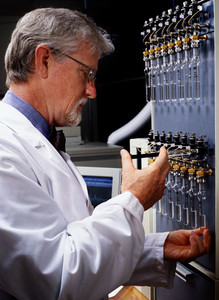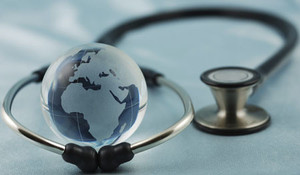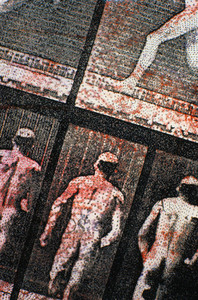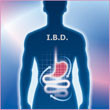Confirming the biosimilarity of monoclonal antibodies (mAbs) is fraught with challenges beyond those faced by currently approved biosimilars, warn Ebbers and co-authors at Utrecht University, The Netherlands [1]. The threat of unexpected immunogenicity has been well reported, but the problems do not start there. The first steps towards establishing the biosimilarity of an anticancer mAb, the preclinical stage, presents challenges of its own.
In vitro
Before a possible biosimilar mAb reaches the clinic or even a living cell, in vitro studies are required to confirm that it shares comparable functional binding with its originator. In the case of bevacizumab (Avastin) biosimilars, which have provoked much controversy, the in vitro comparability exercise should present less of a challenge. But although in vitro studies are quantifiable and can be more specific than studies in animals, they will not detect the effects of post-translational modification that can occur in vivo. And differences in in vitro studies do not always translate to differences in the clinic, as seen in the treatment of age-related macular degeneration (AMD). Bevacizumab and another mAb ranibizumab are very different according to in vitro studies, but very similar when treating AMD in the clinic.
Binding affinity and functional assays
A biosimilar of bevacizumab, being an anti-vascular endothelial growth factor (VEGF) mAb, must clearly demonstrate binding to VEGF. In the case of the originator, this has been shown using a number of in vitro affinity binding assays, including radioligand binding, immunoprecipitation assays and surface plasmon resonance assays, which could also be used to establish biosimilarity.
Likewise, highly accurate, sensitive functional in vitro studies – including those showing potent inactivation of VEGF in angiogenesis models and an ex ovo model of angiogenesis confirming inhibition of vessel formation – can be used to closely compare the affinity, potency and downstream signalling modulation of anti-VEGF mAbs.
In vivo
In vivo testing of biosimilar mAbs, and notably bevacizumab, presents a greater challenge. Only two model species are available for most repeated dose pharmacokinetic and toxicity studies of bevacizumab because, apart from human VEGF, this mAb only binds to cynomolgus monkey and rabbit VEGF. Unfortunately, long-term pharmacokinetic studies cannot be carried out in rabbits because bevacizumab induces the formation of antibodies after only eight days. This leaves drug developers with only a non-human primate model, and the associated ethical and cost issues that entails. But the problem does not stop there, because frequent side effects of bevacizumab seen in clinical trials (hypertension and proteinuria) are not seen in cynomolgus monkeys, so dose safety issues should not be studied in this model. All of which suggests that clinical studies will be necessary regardless of in vivo studies.
This second article in a series of four provides insight on the issues faced by regulatory authorities as they deal with preclinical verification of biosimilar monoclonal antibodies for cancer.
Related articles
Biosimilar monoclonal antibodies – time for a regulatory rethink
Biosimilarity of anticancer monoclonal antibodies in the clinic
Challenges and opportunities for anticancer mAbs
Amgen’s biosimilar plans
Oncobiologics and Viropro make biosimilar deal
US$67 billion worth of biosimilar patents expiring before 2020
Reference
1. Ebbers HC, van Meer PJ, Moors EH, Mantel-Teeuwisse AK, Leufkens HG, Schellekens H. Measures of biosimilarity in monoclonal antibodies in oncology: the case of bevacizumab. Drug Discov Today. 2013;18(17-18):872-9.
Permission granted to reproduce for personal and non-commercial use only. All other reproduction, copy or reprinting of all or part of any ‘Content’ found on this website is strictly prohibited without the prior consent of the publisher. Contact the publisher to obtain permission before redistributing.
Copyright – Unless otherwise stated all contents of this website are © 2013 Pro Pharma Communications International. All Rights Reserved.








 0
0











Post your comment